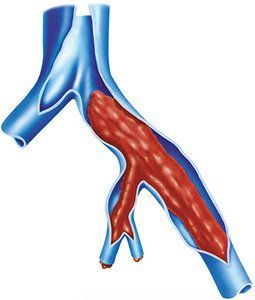Refund requests are an unavoidable part of running a chiropractic practice. Whether a patient is unhappy with their care, believes an adjustment caused harm, or simply changes their mind, these situations must be handled carefully to avoid escalation. While chiropractors are not legally obligated to issue refunds in most cases, there are times when doing so is the best business decision to protect the practice.
DVT: Know the Signs and You Could Save a Life
I lost a friend several months ago. He died from a pulmonary embolism (PE) secondary to a deep-vein thrombosis (DVT) that originated in his lower leg. Bobby was in his mid-60s, soft-spoken and had a big heart. He was also obese, had a terrible diet and was out of shape. These factors placed a strain on his heart and circulatory system, all of which are risk factors for DVT formation.
Bobby had driven home to see family for Thanksgiving. The trip usually takes 13 hours by car, but Bobby made the trip in just over 11 hours. On the Sunday following Thanksgiving, he began to have trouble breathing and became dizzy when he stood up. He sought help in an emergency room and was diagnosed as being dehydrated, given IV fluids and told not to travel again until he was rehydrated and could stand without experiencing dizziness.
The Tuesday after the ER visit, Bobby woke with labored breathing and asked a family member to call the emergency medical system. He slumped over and died while the call was being placed.
Deep-Vein Thrombosis: Risk Factors and Signs

DVTs form in the lower extremities when blood pools and clots due to prolonged inactivity. Movement is important in lower extremity circulation. The contraction of leg muscles helps pump blood back to the heart. Without muscular contraction, blood flow can stagnate.
DVTs are a serious problem and can easily lead to death if not detected early and proper treatment initiated. The combination of DVTs and PEs is currently the third leading cause of cardiovascular-related deaths in the U.S., resulting in 100,000 deaths annually.1-2
Table 1 lists clinical circumstances and signs associated with the Wells Score System for DVT probability. Each risk factor has been assigned a value. The sum of the factors relates to the probability of developing a DVT.3 Note that the scale lists paralysis, paresis, being bedridden and immobilization of the lower extremities as factors. All of these factors relate to prolonged inactivity. The same risks are present for traveling long distances with little or no activity during the trip, the same situation described in the story above.
Table 1: The Wells Score System For Dvt Probability
Doctors must be aware of the clinical circumstances of DVT and PE for the sake of all patients. The importance of movement as a deterrent for both conditions and for a patient's overall health cannot be stressed enough. All patients must be encouraged to get up and move to the best of their ability, and all doctors must be able to identify DVT and PE in the clinical environment. References
December 2016
Trending
Billing / Fees / Insurance
Brandon Hoffman, BA
Rehab / Recovery / Physiotherapy
Back pain? Blame the psoas. Seems as if everybody wants to dive headfirst into their psoas at the first sign of trouble with the lumbopelvic-hip region. Perhaps no other muscle is blamed more for causing problems than the psoas. Yes, it is an important stabilizer of the lumbar spine, but it shouldn't be the only one on which you focus. There is another big player on the scene: the iliacus.
Perry Nickelston, DC, FMS, SFMA
News / Profession
Interested in providing a new service? Need to know whether you can pursue dry needling, venipuncture or even animal chiropractic? Or perhaps you’re advising a prospective chiropractic student who doesn't know whether a bachelor’s degree is required for licensure in your state. The answers to these questions and more are available on Chiropractic Future’s Government Affairs Hub. | Digital Exclusive
Dynamic Chiropractic Staff
|



